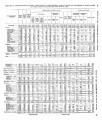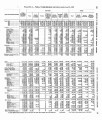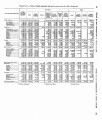| OCR Text |
Show REPORT OF THE COMMIGSIOHER OF INDIAN AFF- 21 and it is essential and desirable that such lands be designated 83 coming within the San Carlos project. It is necessary to ascertain the lands in public and private ownership best entitled to be brought within the project and to perfect the plans for the definition of the project so that it may be approved by the Secretary of the Interior to enable the carrying out of the mandate of Congress. Arrangement, if possible, also must be made for the relocation of approximately 12 miles of the Southern Pacific Railroad Co.'s tracks 157 agreement; or if this be not possible, by starting condemnation proceedings therefor., The engineering features of the project pre-liminary to construction have been carried on, and under date of June 17, 1925, a board of consulting engineers was appointed to supervise plans and specifications for this structure. Prior thereto on May 16,1925, there was appointed a board to appraise the various rights of the Apache Indians on the San Carlos Reservation that will be affected by construction of the reservoir. The preliminary wprk of this project is progressing as rapidly as can be expected in view of the varlous requirements imposed by the act authorizing the project. The legal work has been placed in the hands of Mr. Joho F. Truesdell, who is familiar with conditions on the ground and with the Indians' problems. The Department of Justice is handling the suit for the adjudication of the water rights of the natural flow of the Gila River. A tentative form of bill has been drafted and no doubt suit will be instituted in the near future for the settlement of , the water rights of the Indians and the white water users along this stream. The outlook, in view of these conditions, is indeed promis-ing for these Indians. They are of a peaceful nature, agriculturists for generations and, with an adequate supply of water to enable the Drawer cultivation of their lands. will undoubtedlv be a self-sustain- $g-people. The diversion dam with bridge superstructure across the Gila River at Sacaton, Ariz., was reported on June 15 of this year to be approxin~ately complete. This dam was constructed for the benefit of the Indians at a cost approximating $700,000. In addition to the construction of this dam, work on the construction of the Florence- Casa Grande Canal has be n continued. The drainage system at the Pueblo Isleta, commenced in 1923, haa been completed at an approximate cost of $45,000. Approximately 3,500 acres of agricultural land have been reclaimed by this work at an average cost of about $14.40 an acre. The drainage project is functioning even better than was expected, and it is believed that the results show greater success than anticipated in teaching these Indians and those of the other pueblos alon the Rio Grande the value of reclaiming their water-logged lands % y this method. Work was continued on water development by drilling of wells to increase the supply for irrigation, domestic, and stock purposes on the Navajo and Hopi Reservations m Arizona and New Mexico. The sum of $45,000 was available for this purpose. The benefits of this work were particularly felt during the past year which was an exceptionally dry one in that section of the country. A similar appropriation is available for continuation of this work during next - - . - year. The difficulties experienced in the past in obtaining adequate water supply for the Indians on the Walker River Reservation in Nevada |



































































